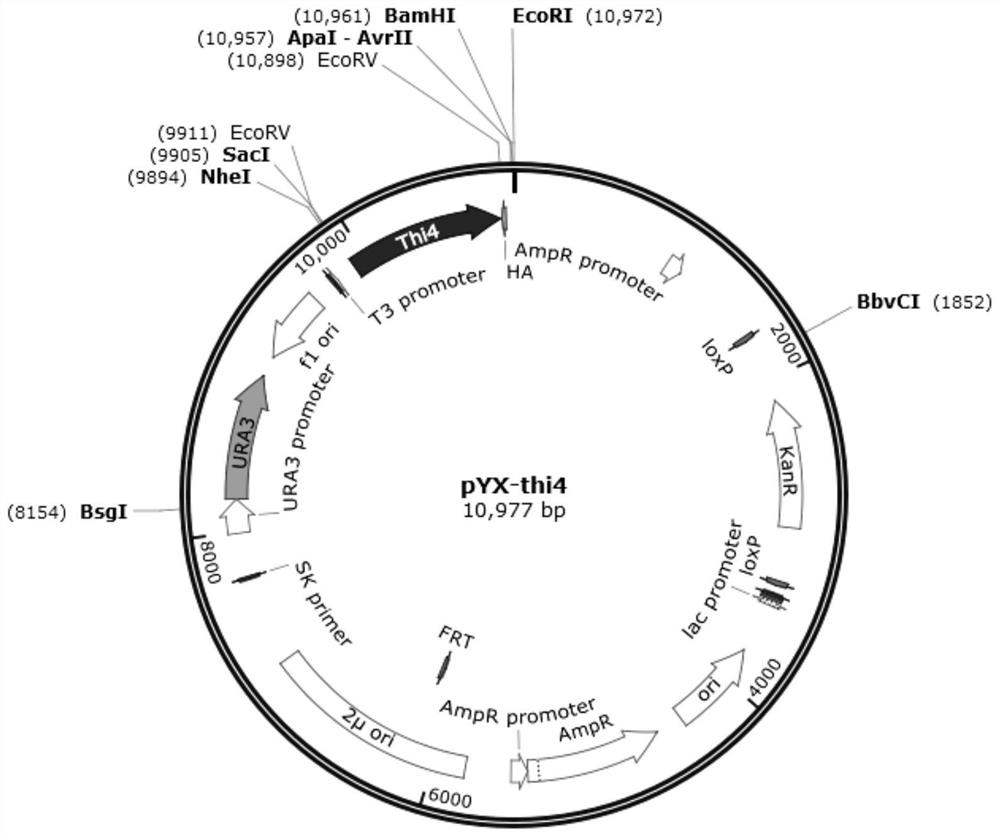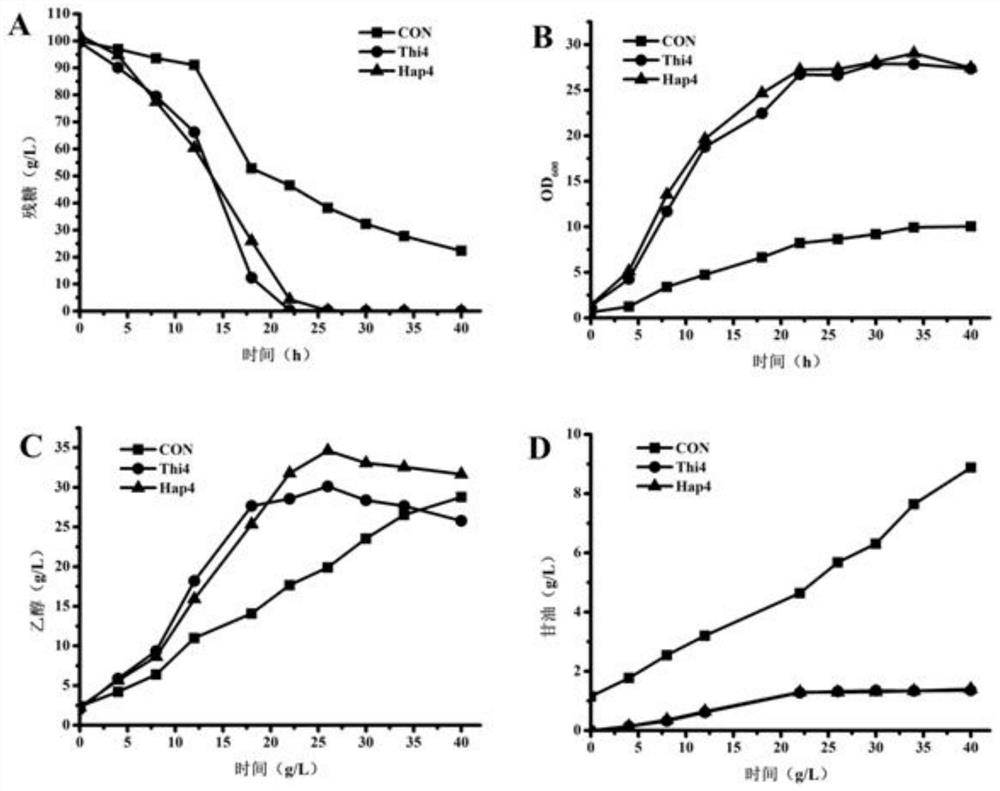Saccharomyces cerevisiae Genetically Engineered Bacteria Using Glucose Efficiently, Its Construction Method and Application
A technology of genetically engineered bacteria and Saccharomyces cerevisiae, which is applied in the field of Saccharomyces cerevisiae strains and its construction for efficient utilization of glucose, can solve problems such as metabolic impact, achieve simple molecular operations, increase glucose consumption rate, and improve fermentation performance.
- Summary
- Abstract
- Description
- Claims
- Application Information
AI Technical Summary
Problems solved by technology
Method used
Image
Examples
Embodiment 1
[0051] Using Saccharomyces cerevisiae strain BY4741 (MATa; ura3; his3; leu2; met15) as the starting strain, Thi4 was overexpressed with the expression vector constitutive high-copy plasmid pYX212 to obtain recombinant strain THI4; the expression vector constitutive high-copy plasmid pYX212 was used to overexpress Hap4 , resulting in recombinant strain HAP4; a Saccharomyces cerevisiae strain containing an empty plasmid
[0052] BY4741 (MATa; ura3; his3; leu2; met15) was the control strain CON.
PUM
 Login to View More
Login to View More Abstract
Description
Claims
Application Information
 Login to View More
Login to View More - R&D
- Intellectual Property
- Life Sciences
- Materials
- Tech Scout
- Unparalleled Data Quality
- Higher Quality Content
- 60% Fewer Hallucinations
Browse by: Latest US Patents, China's latest patents, Technical Efficacy Thesaurus, Application Domain, Technology Topic, Popular Technical Reports.
© 2025 PatSnap. All rights reserved.Legal|Privacy policy|Modern Slavery Act Transparency Statement|Sitemap|About US| Contact US: help@patsnap.com



